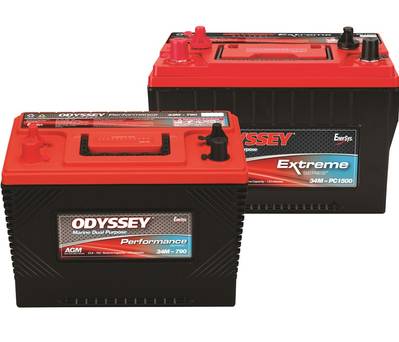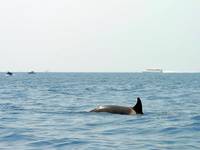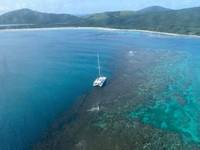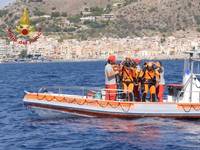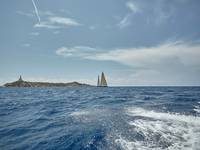Deep Cycle Marine Battery Designs: Which is Best for Your Boat?
Traditionally, boat owners have relied on deep cycle batteries to power trolling motors. This specialized marine battery type delivers just what the application needs: energy for a low-power load for many hours. Today, deep cycle batteries are also used to power a range of onboard 12-volt electronics (aka a vessel’s “house load”), including navigation lights, fish finders, aerator pumps and much more. These power draws, combined with the trolling motor, place heavy demands on deep cycle batteries.
Fortunately, today’s boaters can choose from several deep cycle battery designs to meet their requirements, but they are not all created equally. To find the best deep cycle battery for your boat, it’s worth considering the pros and cons of today’s competing designs. Reviewing common application requirements is a good place to start.
Deep Cycle Battery Job Requirements
Marine starting batteries are used to deliver short bursts of power (hundreds to thousands of amps) for cranking the engine. Deep cycle batteries provide a much lower but sustained current (generally up to 10 amps) over several hours.
Much like a car battery, conventional lead acid marine starting batteries feature thin plates and are recharged quickly by the engine alternator but are not designed to be repeatedly discharged more than a few percent without shortening their life dramatically. In contrast, conventional lead acid deep cycle batteries have fewer but much thicker plates with a higher antimony content. This construction allows them to be repeatedly discharged up to 80 percent Depth of Discharge (DOD) relative to their current capacity before recharging (aka one cycle ). However, they are not good for handling high cranking amps.
Deep Cycle Battery Designs
Lithium-Ion: Lithium-ion (Li-ion) batteries combine a low weight-to-energy ratio, high storage capacity and typically longer cycle lives, which is why they are widely used in small consumer electronic devices such as laptop computers and cellular phones. Until recently, their development for marine applications has been slow, but boaters can now select from several options on the market.
Because Li-ion batteries can be up to 70% lighter than their conventional lead acid counterparts, professional anglers are driving their adoption. That’s because professional angling vessels often operate with four to five deep cycle batteries, and any reduction in overall weight can be a competitive advantage.
Li-ion batteries do not require watering or equalization charging. However, boaters will pay a significant premium for these advantages, as the cost of Li-ion marine batteries is several times higher than conventional lead acid designs.
Flooded Lead Acid: Also known as “wet” batteries, conventional flooded lead acid batteries employ a liquid (acidic) electrolyte that literally floods (or fills) the space between the positive and negative plates. Most commonly, the positive plates are manufactured with a lead-antimony alloy and the negative plates are made with a lead-calcium alloy. This combination is prone corrosion and sulfation, reducing the capacity and performance with each and every cycle, and while sulfation can be reversed, corrosion is permanent.
This “tried-and-true” battery design provides a relatively high energy output and lifecycle, with 200-amp (hour) units generally offering the best cost-to-value ratio. For marine applications, that power and affordability come with a risk of electrolyte (acid) spills or leaks that can damage the vessel.
Conventional flooded lead acid batteries are also maintenance-intensive, requiring regular watering and limited exposure to extreme temperatures to avoid weakening their charge and risking permanent damage.
Gel Cell: Gel cell deep cycle batteries combine a Valve Regulated Lead Acid (VRLA) design with a silica gel that thickens the electrolyte to immobilize it inside the case. Like all VRLA batteries, gel cells are sealed and use gas recombinant technology to relieve gas pressure that can occur if the battery is overcharged or overheated.
For boaters, the benefits of this sealed design include the elimination of potential electrolyte spills and watering maintenance. Gel cell deep cycle batteries can also handle deeper discharges and accidental overcharging better than conventional flooded lead acid batteries and will deliver up to 20 percent more cycles. However, they provide less power overall and reduced capacity in colder temperatures.
Absorbed Glass Mat (AGM): AGM batteries are similar to gel cells, as both feature lead-calcium alloy plates and VRLA technology in a sealed, spill-proof design. But instead of employing a silica gel to immobilize the electrolyte, AGM batteries use (fiber) glass mat separators. The glass mats absorb the electrolyte and are pressed between the positive and negative plates. As with gel cell deep cycle batteries, the sealed, VRLA design of AGM batteries eliminates the risk of acid spills and watering maintenance. Other AGM advantages include faster charge rates, better performance in lower temperatures and greater power density.
Thin Plate Pure Lead (TPPL): TPPL batteries are AGM VRLA batteries that use 99 percent pure lead for the plates and high-grade sulfuric acid for the electrolyte. These high-purity materials allow TPPL batteries to build on the benefits of standard AGM designs and, because of the material selection, are less likely to sulfate and corrode.
As the TPPL designation implies, these batteries feature plates that are thinner than conventional flooded lead acid battery designs, so more of them can fit inside the battery case. More plates provide greater plate surface area – compared to six-pack AGM batteries, TPPL batteries offer 15% more surface area and thus 15% more energy storage, plus even more power capability for a given volume.
Combined with the high-grade electrolyte, the thinner plates deliver enough power to provide premium dual-purpose marine battery performance – that is, a battery with a Cold Cranking Ampere (CCA) rating that’s high enough to start the engine, but one that can also withstand the deep and frequent DOD that trolling motors and house loads require.
For example, the ODYSSEY battery (ODX-AGM31M) can provide up to 2,150 amps for the duration of a typical engine start (5 seconds). When it is deep cycled to an 80% DOD, it will deliver as many as 400 cycles, provided it is adequately charged. The battery also features a robust construction to resist high-impact shocks and vibration on the water and can operate in temperatures from -40°F (-40°C) to 176°F (80°C). This dual-purpose capability of TPPL batteries will allow you to combine battery banks into one functional group maximizing the value of the batteries installed while potentially saving maintenance, weight and cost.
Final Thoughts on Your Deep Cycle Decision
Ultimately, boaters should weigh the pros and cons of different deep cycle battery designs against their specific application demands. They should also consider their tolerance for battery maintenance, as well as their storage situation and climate. Given the need for a battery that can start the engine and power trolling motors and support house loads, the multi-purpose ODYSSEY marine battery and its proprietary TPPL technology will offer long-term value and versatility for most boating applications.
